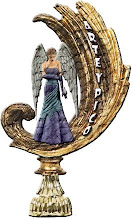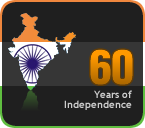Today my mind wanders back to those days - my childhood days - the way my parents, no, my mother made preparations for this festive occasion. My father was a non - interfering person in the matter of running the household or how the festivals and other functions in our home were conducted. He left all these responsibilities to my mother. My mother was a very capable lady - a good cook a very cautious spender and one who believed in tradition and customs. We were a big family- four daughters and three sons. There used to be at least one or two cousins staying with us, either studying or on the lookout for proper jobs. Even with such a big family my mother was always particular that all festivals and functions like birthdays of each and every member of the family were conducted in the proper way.
Diwali meant getting a new set of pavadai (full skirt) and blouse some times it turned out to be two sets for the younger girls and a pair of half pants and shirt for my two younger brothers. Today’s youngsters and children will find it very difficult to believe that in those days everyone had only three or four sets of clothes. New clothes were bought only for Diwali and for birthdays. Also it meant lots of patakas and my mother’s Diwali special sweet. The grownups were given the freedom to buy what they needed or wanted. Word would be sent over to our tailor to come home as quickly as possible to take the measurements of every one of us, to find out how much material would be needed. We youngsters used to feel so important and full of pride when the tailor - yes I still remember his name, Hariharan - took our measurements. It was either my eldest sister or my big brother who shopped for the materials needed the same day. Next day the tailor was again called home to collect the materials. He would be given a deadline - a maximum of four days, to bring home the finished products. If by any chance this was delayed there would be a cut in his wages. Maybe he did not want a cut in his hard-earned wages. He was very prompt in delivering the goods. We youngsters would be so anxious to wear and try our new clothes, but our mother was very particular that the new clothes that we could wear them only after GANGA SNANAM—the ritual early morning bath on Diwali day.
Diwali meant a lot of patakas- fireworks. In those days there was no ‘Made in Sivakasi’ fireworks. India was under the British rule and so belonged to the Commonwealth group of countries. India as a country did not manufacture anything. There were no industries, even our school notebooks, pencils, erasers - all of them were imported. As I said to someone the other day, we all grew up with foreign cars, French perfumes like Evening in Paris, Italian soaps, Swiss chocolates, Waterman and Parker fountain pens and of course British authority.
So for Diwali we turned to China, the one country that really gave us the best crackers. Even today my feeling is they top the list. Two days before Diwali my elder brother or my eldest Athimbar took the responsibility of buying the patakas while we youngsters waited for them to come back home with the patakas. I remember vividly one Diwali time of those days - my brother coming back from the market empty handed with the news that all the patakas were sold out by the time he reached the shop! Were we disappointed? Yes, to the pit of our stomachs. We ran to our mother for comfort and more for complaining. My mother led us back to the front veranda all the time smiling to herself. Then we knew that our brother was simply teasing us. A coolie was there with a big basket on his head and my brother helping him to unload the basket which was packed with all kinds of fireworks. Our joy was also brimming to the top of our hearts. No one will believe me today if I tell you that the whole basket full of patakas cost my brother only Rs. Five!!
The day before Diwali my mother would be very, very busy making the dough for iddli - a must in the Diwali day breakfast menu, the grinding too to be done manually. The sweet prepared in every household in our parents’ families on this occasion was OKKARAI* - laddus and jangiris were made only for weddings in the olden days Also there were no shops preparing and selling these items.
Come Diwali morning, my mother was the first to have her bath by three a.m. after which she would be busy waking up all children, apply oil on our head and giving us a quick bath. Then only we were allowed to wear our new clothes after which we were made to touch our parent’s feet to get their blessings. Then came the interesting part of the day, bursting the patakas.
By seven in the morning breakfast also was served--- iddlis with coconut chutney (freshly ground on the grinding stone), paruppu (thuvar dal)vadai and the sweet Okkarai
Looking back I really wonder how my mother and many like her managed all this single-handed.
Today with all the modern gadgets and help from many sources life is much easier for the lady of the house. Ready-made clothes, sweets, why even ready-made iddli dough are all available in the market. But there is one shortage in many households! And that is TIME. Precious time with women too working, working as hard as any man! Added to that in most families she is the one to do the shopping, cooking and taking care of the children’s needs. Blessed are the women when the men understand the women’s problems and give them a helping hand.
HAPPY DIWALI
---------------------------------------------------
*RECIPE for OKKARAI
One measure thuvar dal
Equal measure of jaggery
Equal measure of grated coconut
Two tablespoons of ghee
Cook the thuvar dal in the pressure cooker. wait for one whistle, turn the gas low for 15 minutes. wait till the cooker is well cooled and then only open it. Grind the coconut well in the grinder then add the cooked dal and run the grinder for ten seconds. Melt the jaggery in a cup of water and strain to remove all the impurities. Boil the jaggery syrup, when it thickens add the dal coconut paste. Lower the flame and allow the mixture to thicken all the while stirring with a flat ladle. Add two table spoonfuls of ghee. Go on stirring till the mixture gets dry and turns to be powdery. Allow it to cool before serving. This sweet usually stays fresh for nearly a week.






